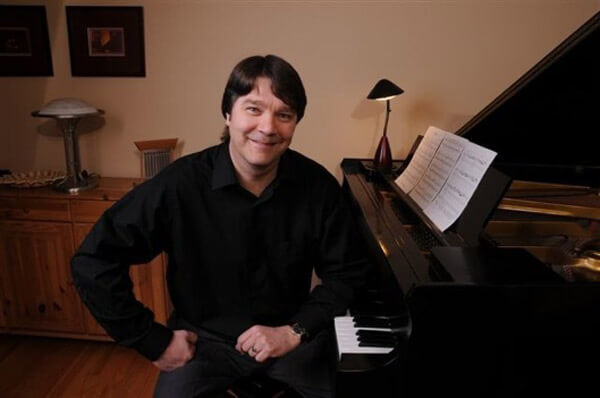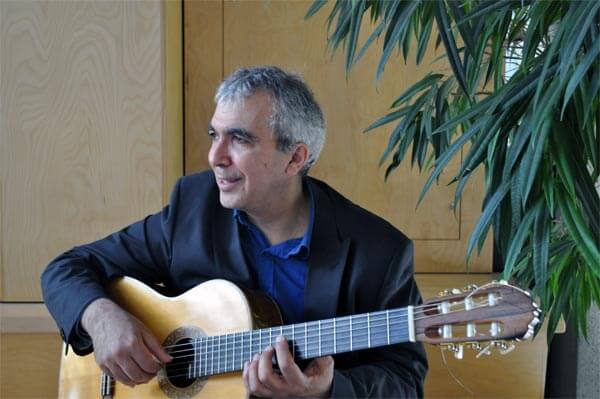 Ottawa, Canada has had the privilege of playing host to two of the largest chamber music festivals in the world for five years now, and to one for fifteen before that. On Friday, July 11, the first of these, Music & Beyond, played host to its first concert during the 2014 festival dedicated primarily or exclusively to contemporary composers – and in this case, all of the pieces were from Ottawa, and all were world premieres, tied together by a compelling theme centered on one of the great ecological issues of our time.
Ottawa, Canada has had the privilege of playing host to two of the largest chamber music festivals in the world for five years now, and to one for fifteen before that. On Friday, July 11, the first of these, Music & Beyond, played host to its first concert during the 2014 festival dedicated primarily or exclusively to contemporary composers – and in this case, all of the pieces were from Ottawa, and all were world premieres, tied together by a compelling theme centered on one of the great ecological issues of our time.

Julian Armour – Photo Credit Couvrette/Ottawa
I’m writing, of course, about Global Warming (as is the title of this event). Emcee and executive director Julian Armour was candid and amiable, graciously inviting an intimate crowd of about eighty (some standing at the back of the basement level of our Museum of Nature) to the stories that led to the curation of this unique event.
“It’s pretty cool here… all it needs it a little wine cellar,” Armour quipped of the unlikely concert space. He then recounted a student from the University of Minnesota he had heard of, off-hand, who decided to chart the gradations in temperature due to climate change in musical terms. “In not long… the pitch will be right out of our hearing range,” Armour suggested. That student, Daniel Crawford, took the notes and calculated the lowest temperature between 1880 and 2012 and made this a low C on the cello. The temperatures since were then transcribed to musical notation. A quick demonstration of the theme followed on Armour’s cello.
“Now this is 1891, when my cello was built…”
“Now another big leap… this is when the stock market crashed…” – here, Crawford’s melody flirted with the tenor range and ventured beyond.
Armour barrelled through the decades, the melody steadily trending higher and higher. As he reached 2010, he entered the soprano range. “So I’ll let you decide whether that theme was written by God or by man.” Semi-jokingly. The event was rife with this sense of self-awareness, as is inevitable when focusing so intently on what is a contentious issue.

Colin Mack
A piece by Colin Mack, whose title I unfortunately couldn’t parse, opened the concert’s variations. A plaintive keyboard, courtesy of dedicated new-musician Jean Desmarais, drifted from key to key with insouciance, steadily building its own insistence with the cello to an appropriately abrupt end.
“These are all world premieres, by the way. And as long as there is a world, there will be world premieres,” Armour proclaimed. Most of the composers were present, except Roddy Elias and Matthew Larkin, who are both very active performing musicians who regrettably had commitments elsewhere.
Gabor Finta’s “Song for a Warm Planet” spoke to his Hungarian heritage somewhat, showing the freest interpretation of the subject matter. Staccato piano acted like green shoots out of the steady, dour melody that seemed to pour out of Armour’s earthy cello.
As for Jan Järvlepp’s variation, “When I looked at this piece, I thought, ‘cool!’ Then I looked at the title and it said, ‘Cool Stuff,'” Armour deadpanned. Järvlepp’s playful spirit shone, sounding a bit like an adroit silent film score of the Chaplin variety… had the Schoenberg of about 1922 decided to improvise one on a whim. (This is a very good thing.)
A strained trickle of notes suggesting an exercise in tenuousness and temerity comprised Matthew Larkin’s “Song of our Warming Time.” As an example of this restraint, an extended technique involving natural harmonics appeared only once, in the middle of the piece. A notable silence followed this variation, a definite highlight of the concert.

Roddy Elias
Roddy Elias took Crawford’s theme in a different direction still, showing an interesting, jazz-influenced vocabulary in three sections beginning with a chorale and two lighter sections afterwards, light being a favourite theme in his music. As promised, incredibly rich and dense textured harmonies followed, marked by a preference for fascinating contextual changes offered by same-note chromatic modulations. A 5/4 beat entered the fray thanks to an electronic loop, and Armour played against this deftly, marching ever upwards with the ordained theme.
Throughout, the playing was exceptionally sensitive, and respected the range of styles the represented by the composers very well. It’s not surprising to me that these five Ottawa composers appeared to have found such inspiration in the subject matter, or that they have so cleverly crafted in it. I can only hope that eventually these variations find their way on record – Julian Armour’s informative witticisms fully intact.























